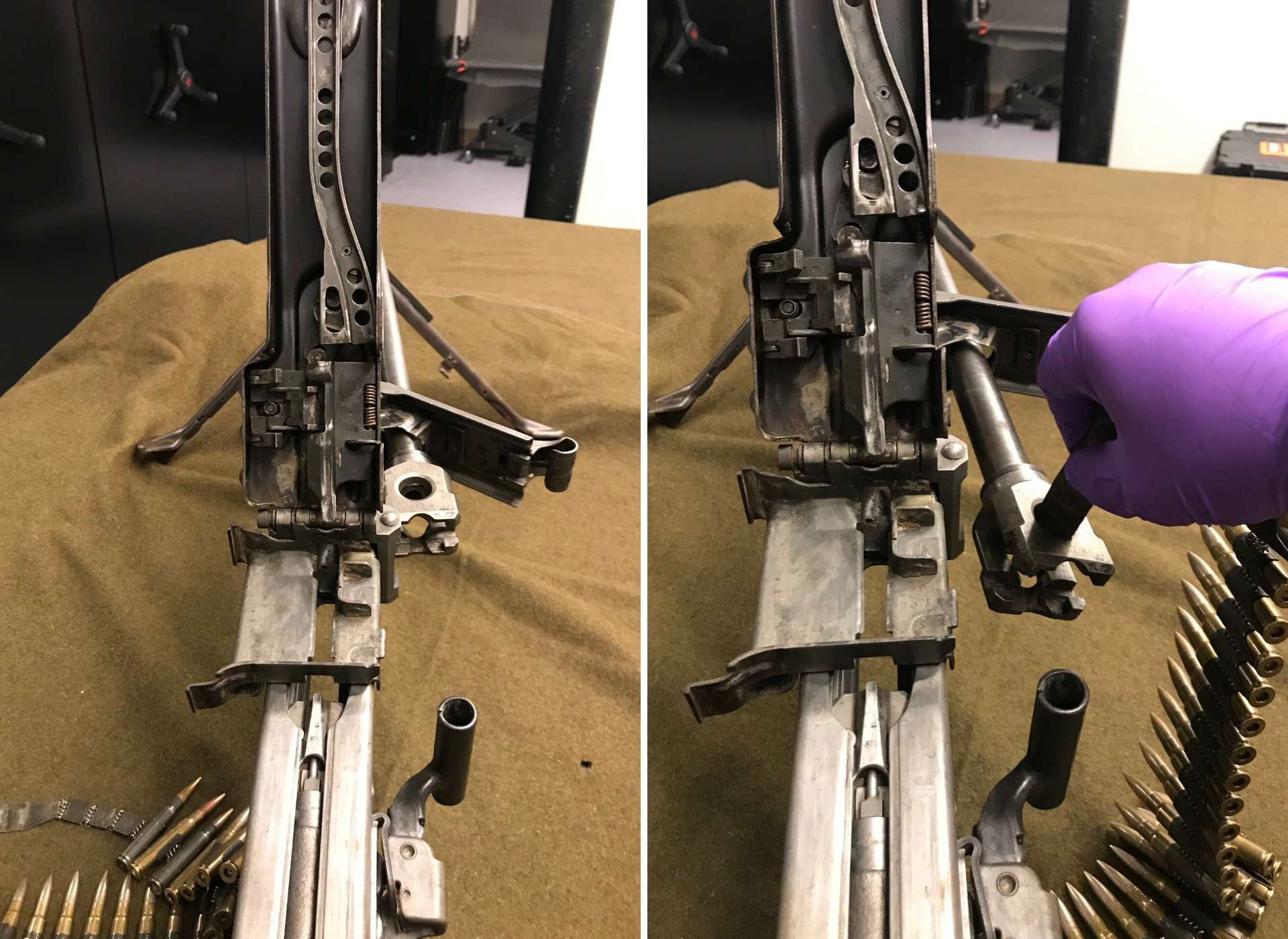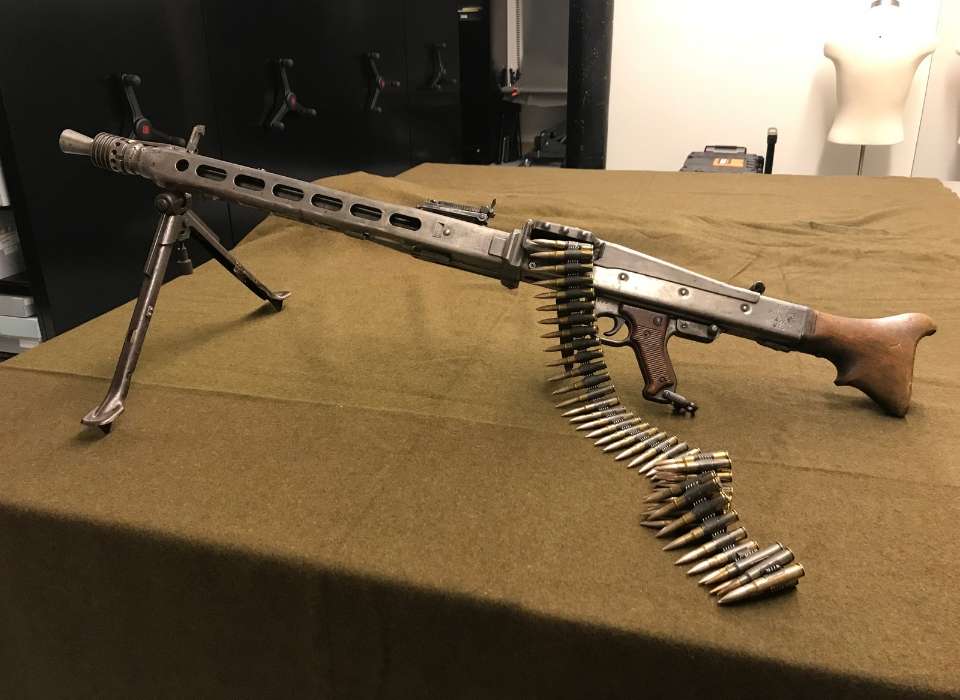American soldiers had a nickname for everything, even the enemy weapons on the battlefield that killed them. GIs christened some of the most terrifying weapons in the German arsenal with some pretty harmless-sounding names. For example, incoming rockets were “Screaming Mimis,” “Potato Mashers” were a type of German grenade, and the antipersonnel mines that leapt up from under the earth and then exploded at crotch level were “Bouncing Betties.” Not so for the MG-42 machine gun, which received a more ominous nickname that left little doubt about the capabilities of the weapon. German troops called it the “Knochensäge”—“bone saw” in English. GIs altered the translation and began calling it “Buzz Saw” or “Hitler’s Buzz Saw.”
Now, put yourself in the boots of a US soldier in 1944 and imagine yourself as a rifleman in a squad that has just been given the order to silence a German machine-gun position. You’re a battle-hardened veteran because you’ve survived the rigors of combat for about a month, which coincidentally is the last time you had a bath. Directly ahead of you is the unmistakable roar of the MG-42 machine gun, a weapon that fires so quickly it has a cadence unlike any other weapon on the battlefield. It sounds like cloth being ripped or the belch of a bullfrog. You’ve been in combat long enough to know that the German gun spits out 1,550 rounds of high-velocity, 7.92 millimeter ammunition per minute, a rate of fire that roughly works out to 25 rounds per second. You are also aware that once you leave the comparative safety of cover and expose yourself, the German gunner has the capability to literally cut you in half if he draws a bead on you; you’ve seen it happen before. Now, what would you do?
When faced with such a scenario, many GIs were simply frozen with fear. In fact, the MG-42 was so intimidating that the War Department created a training film to combat the weapon’s psychological effect on soldiers. The film, which downplayed the German machine gun’s lethality, was shown to infantry replacements that had not seen combat. With staged demonstrations of American and German automatic weapons, the film insists that while the German machine gun has a much higher rate of fire than its American counterpart, the MG-42 does not possess the same degree of accuracy as an American machine gun. The film’s narrator further assures his naïve audience that the MG-42 isn’t as scary as it sounds, and closes with, “Its bark is worse than its bite.” The War Department would have had a pretty tough time selling that line to veterans of the landing at Omaha Beach.
By the autumn of 1944, the Germans were fielding large numbers of MG-42s, one gun per 10-man squad. And while accuracy was not a shortcoming of the MG-42, the large quantities of ammunition it used, and its tendency to quickly overheat, certainly were. To address those problems, the German squad of 1944 was essentially rebuilt around the needs of the MG-42; the burden of large quantities of ammunition needed to feed the gun was spread out evenly through the squad. When the weapon overheated and the barrel needed to be changed, the machine-gun crew was vulnerable, even though a barrel change could be conducted in less than 20 seconds.
Depending on the gunner and conditions, a barrel change could be required as often as every 200 to 250 rounds. When the hot barrel was removed, it was set aside until it was cool enough to use again. Machine-gun teams would have as many as six spare barrels on hand.
One example of an MG-42 in The National World War II Museum’s collection was recovered from the battlefield by an army truck driver named Private First Class Leonard Liniewski. Driving through a recently secured area in Belgium, the sharp-eyed Liniewski spotted the abandoned weapon in a field. Liniewski then did what any unsupervised GI would have done in that position; he stopped his truck and seized the opportunity to snag a great souvenir for the folks back home.
As a support soldier, Liniewski was not familiar enough with weapons to disassemble his MG-42, so he hung on to it for a while until he found a camp where German prisoners of war were being held. He traded two packs of cigarettes to an English-speaking German prisoner to teach him how to disassemble the weapon so he could mail it home in pieces. The weapon stayed in the Liniewski family until 2016 when his son Marty donated the weapon to the Museum.
In spite of its tendency to overheat, the MG-42 was an excellent weapon that was light-years of ahead of the US counterpart, the Browning M-1919A4 machine gun. Germany produced roughly 400,000 MG-42s during the war, some of which are still in active service. In fact, dozens of militaries around the world still use postwar variants of the MG-42 machine gun.

Larry Decuers
Larry Decuers is a former Curator at The National WWII Museum and veteran of the US Army's 101st Airborne Division.
Cite this article:
MLA Citation:
APA Citation:
Chicago Style Citation:


![Max Fuchs, New York City cantor, sings as Rabbi Sydney [sic] Lefkowitz, Richmond, VA, conducts the first Jewish services from Germany.](/sites/default/files/styles/max_650x650/public/2025-10/image1.jpg)






